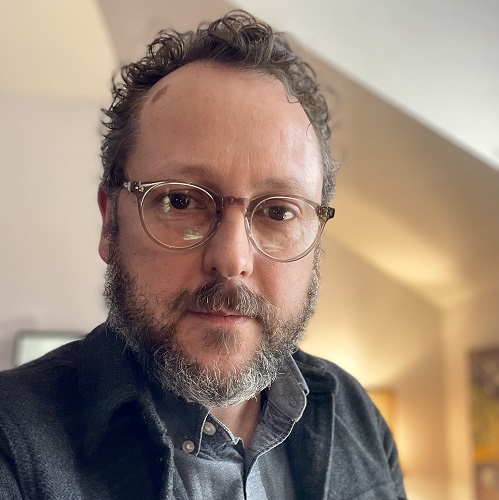Commentary on Revelation 7:9-17
Revelation is a letter to 7 churches made up of poor and marginalized folks trying to survive, resist, and refuse assimilation into the Roman empire. It is concerned with unmasking the powers of empire, alternative liturgies that empire uses to shape and form its adherents morally, and those who, like the Lamb, stand in its way and refuse to worship the empire (Revelation 5 and 13). It is exacting in its assessment of the current state of Rome’s exploitation and oppression over the earth.
Revelation is also a visionary text. It sets out a vision of practices, images, liturgy, and economics that stand in contrast to Caesar’s empire and points its readers to a vision of humanity rooted in the anti-imperial image of the Lamb of Slain.
In Revelation 7, we see an alternative vision of community. Again, here is this pattern of John hearing one thing and then seeing another. John hears the twelve tribes of Israel being described, but then sees something far bigger, far more inclusive and global: the multitude. The multitude stands as an alternative to the tribal confederation, as Wes Howard-Brook and Anthony Gwyther say,
“What had been the forming of an ethnically pure tribal confederation from out of Egypt and within Israel now is revealed to be a multinational, multicultural, multilinguistic multitude, defined simply as those “standing before the throne and before the Lamb, robed in white, with palm branches in their hands.“1
In other words, this is an image of the idea of “include and transcend”. What we thought was this thing is really just the start of this bigger broader thing. This has been the trajectory of the ministry of Jesus from the start, a broadening of inclusion and welcome to the neighbor, but also to the stranger and enemy.
The image that Revelation 7 paints is beautiful:
“After this I looked, and there was a great multitude that no one could count, from every nation, from all tribes and peoples and languages, standing before the throne and before the Lamb, robed in white, with palm branches in their hands.” (Revelation 7:9)
The multitude is countless and made up of “every nation, all tribes, all people, all languages.” This tells us that the vision is that the community formed around the lamb is not formed by borders, nation-states, militaries, ethnicities, or any other human category or distinction we put on others. The binding feature of this new community is that the people stand before the lamb, robed in white, holding palm branches.
Where the empire sorts and protects some while violating others, scapegoats, and casts suspicion on outsiders, the religion of the lamb is a community that has no need for “us versus them”. The multitude is not formed by antagonism, it is formed out of the freedom that comes from sacrificial love, nonviolence, and “patient endurance”.
I am struck by the increasing division in society, as I am sure many of you are as well. From the way social media can be used to divide and conquer with the goal of profit, to the way we develop and build neighborhoods, to politics, workplaces, public health, education, race, class, gender, sexuality, and even divisions within our denominations and congregations, there are so many factions within our modern life.
In his book, The Big Sort2, Bill Bishop writes:
“America may be more diverse than ever coast to coast, but the places where we live are becoming increasingly crowded with people who live, think, and vote like we do. This social transformation didn’t happen by accident. We’ve built a country where we can all choose the neighborhood and church and news show most compatible with our lifestyle and beliefs. And we are living with the consequences of this way-of-life segregation. Our country has become so polarized, so ideologically inbred, that people don’t know and can’t understand those who live just a few miles away.”
I cannot help but think that this is largely by design, a furthering of segregation, or “sorting” in all parts of life are a form of social formation in our culture and society. That it is happening tells us something of the “theology of empire.” Rome had its ways of sorting people out as well through imperial cult, the imperial myth, imperial economics, and imperial force.
John understands that the empire has its own mode of social formation, its own “vision” of community. This sense of community in the empire comes by way of “us versus them” categories. Empire needs concepts of borders and boundaries to exist. And it needs to continue to reinforce them at every step of the way. If you want what is good about the empire you must comply. If you do not comply you will be removed.
The image of the multitude, on the other hand, subverts this subdivision of humanity. The multitude is rooted in a vision of “all” and holds out the possibility of a way of being community that does not need to be over and against others in order to exist. As I stated earlier, I see the multitude here being rooted not in antagonism but in nonviolence and anti-imperial practices like sacrificial love.
We see this more clearly if we continue reading in Revelation 7. The image of the slaughtered lamb, victim of imperial violence, continues to permeate this text. His blood, poured out through nonviolent resistance and sacrificial love, “washes” over and baptizes all victims of empire. This lamb is at the center of the multitude who gather around this “new kind of leader.” The multitude are made up of those who have been faithful to his call to come out of empire even if it cost them their lives.
But I think there is even more than that in this text. Look closer; who else is centered with the lamb in this new community? Rather than border or boundary, the multitude is seen as a community that both centers the Lamb as well as all other victims of empire.
Revelation 7:13 Then one of the elders addressed me, saying, “Who are these, robed in white, and where have they come from?”
Revelation 7:14 I said to him, “Sir, you are the one that knows.” Then he said to me, “These are they who have come out of the great ordeal; they have washed their robes and made them white in the blood of the Lamb.
Revelation 7:15 For this reason they are before the throne of God, and worship him day and night within his temple, and the one who is seated on the throne will shelter them.
Revelation 7:16 They will hunger no more, and thirst no more; the sun will not strike them, nor any scorching heat;
Revelation 7:17 for the Lamb at the center of the throne will be their shepherd, and he will guide them to springs of the water of life, and God will wipe away every tear from their eyes.”
The lamb—as a symbol of resistance against empire—is the center of the church’s liturgy, offering an alternative to what Rome sought to reproduce in its subjects. The multitude, as a new vision that stands in opposition to empire, centers those crushed by its forces.
What a powerful image meant to shape the first-century Christian imagination. I see this as a perfect illustration of the quote widely attributed to Quaker and Civil Rights Activist Bayard Rustin:
“We need in every community a group of angelic troublemakers. Our power is in our ability to make things unworkable. The only weapon we have is our bodies and we need to tuck them in places so wheels don’t turn!”
They hold palm branches, not just a symbol of peace, but a symbol of an entirely different way of living and being in the world. A radically different religio that binds people together not by force or scapegoating but by following the lamb and centering the victims of empire.
This reminds me of something Reverend Dr. William J. Barber II once said,
” ‘We’ is the most important word in the social justice vocabulary. The issue is not what we can’t do, but what we CAN do when we stand together. With an upsurge in racism/hate crimes, criminalization of young black males, insensitivity to the poor, educational genocide, and the moral/economic cost of a war, we must STAND together now like never before.”
Imagine the church today, standing together against these evils of empire, refusing to be sorted out, but sharing in a larger vision of the multitude with the lamb and victims of empire centered in its liturgy, theology, and practice.
Notes
- Wes Howard-Brook and Anthony Gwyther, Unveiling Empire: Reading Revelation Then and Now. p. 210
- Bishop, Bill. The Big Sort: Why the Clustering of Like-Minded America is Tearing Us Apart. Mariner Books: 2009.


May 8, 2022